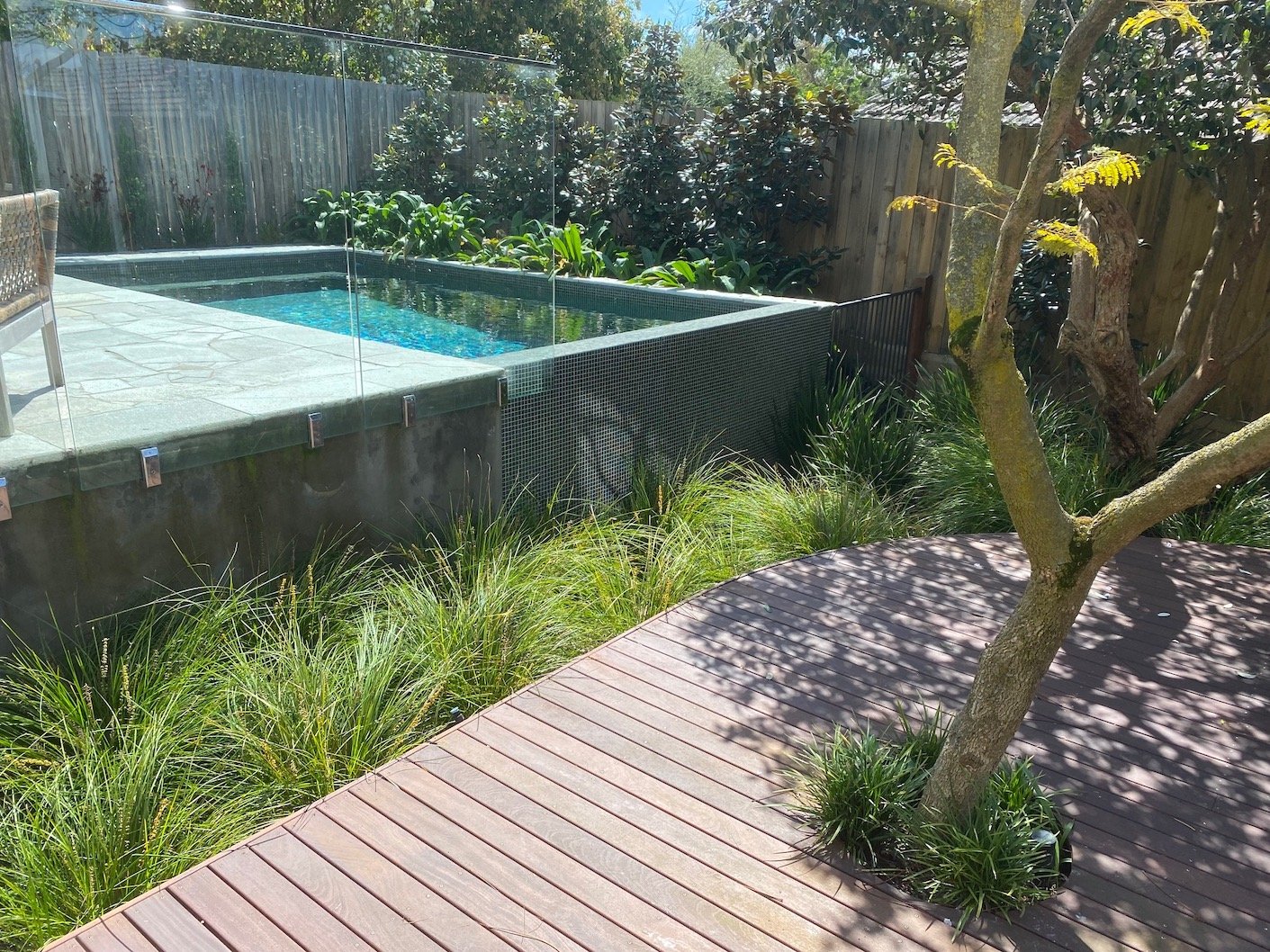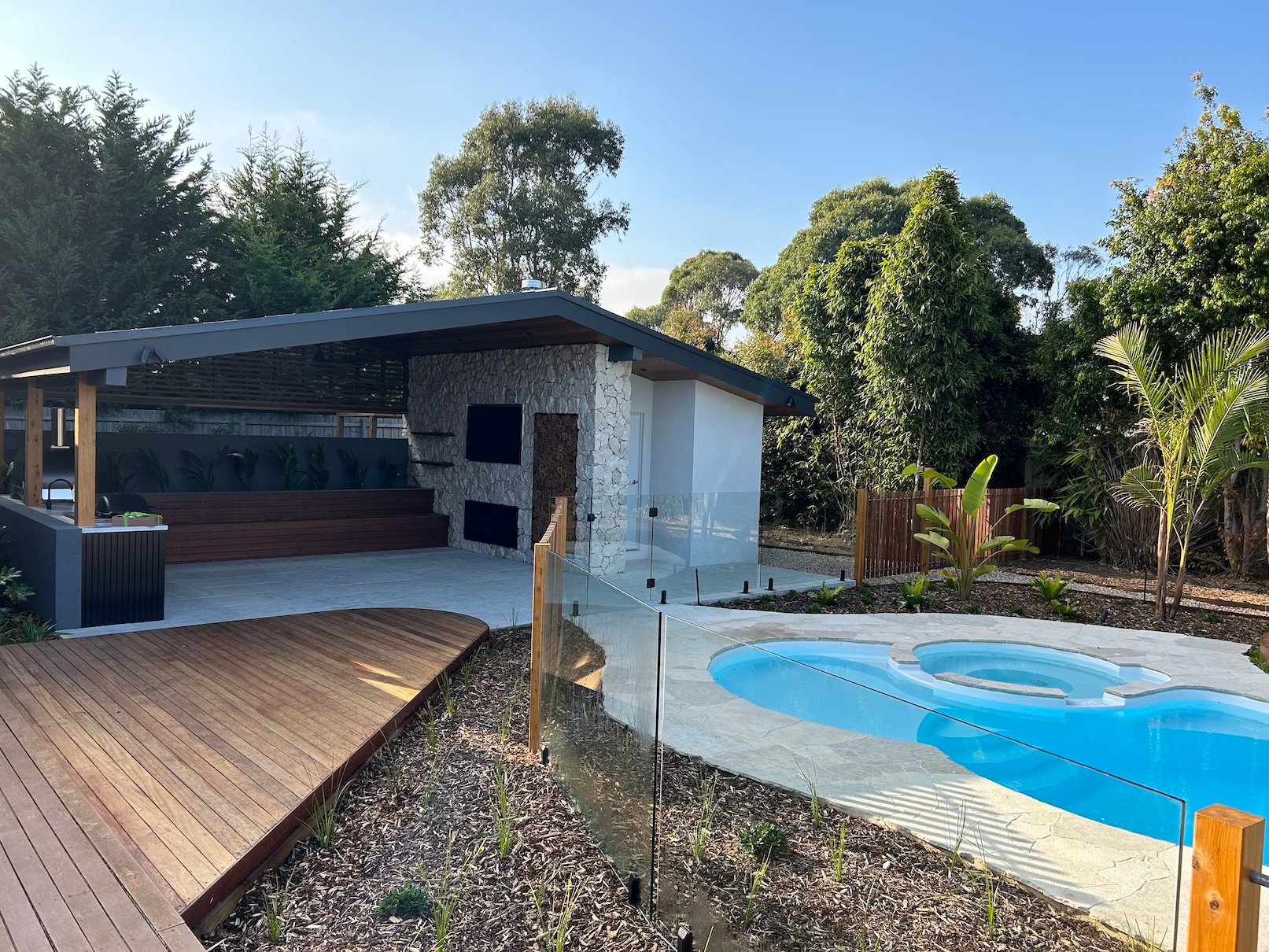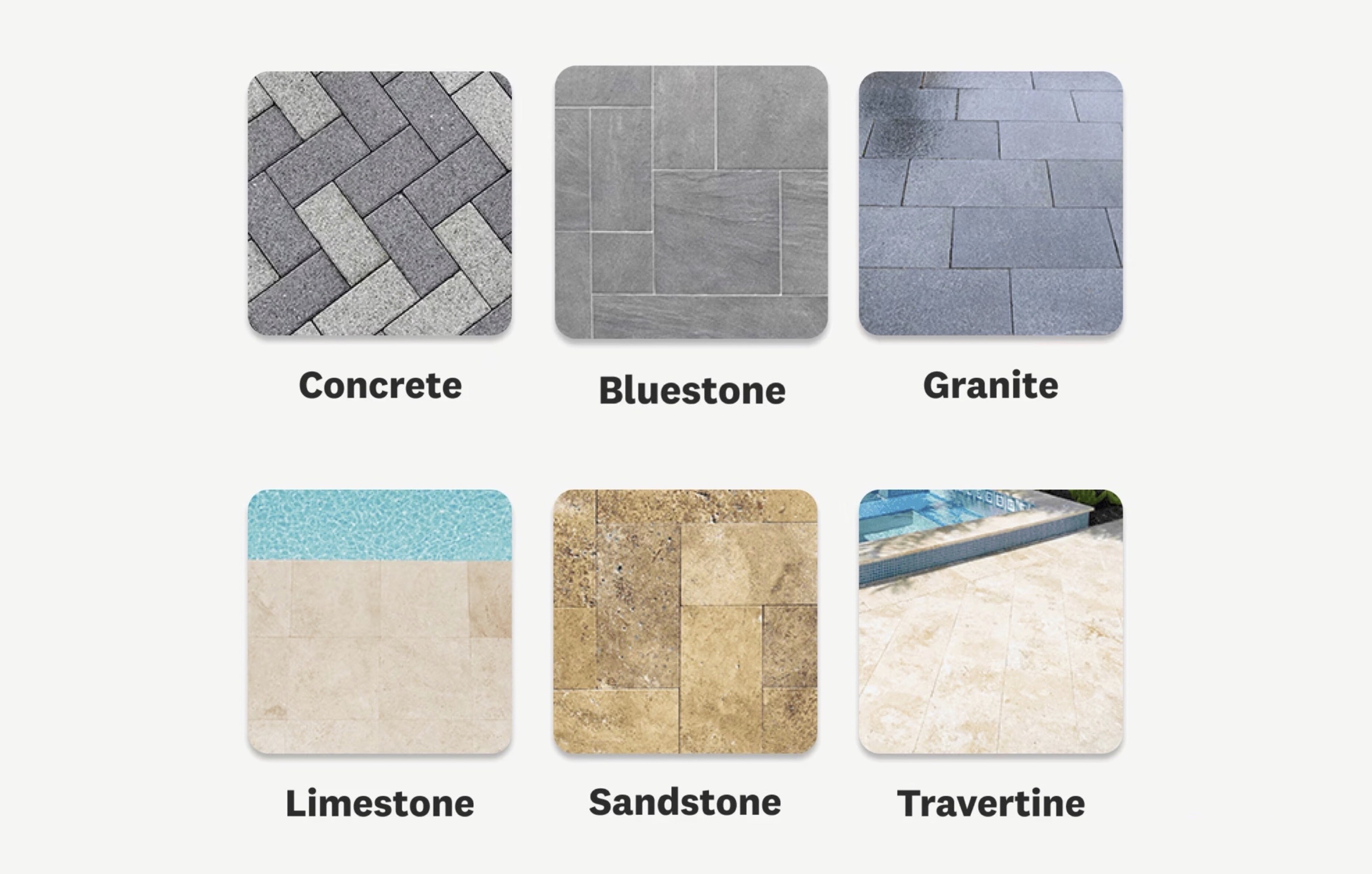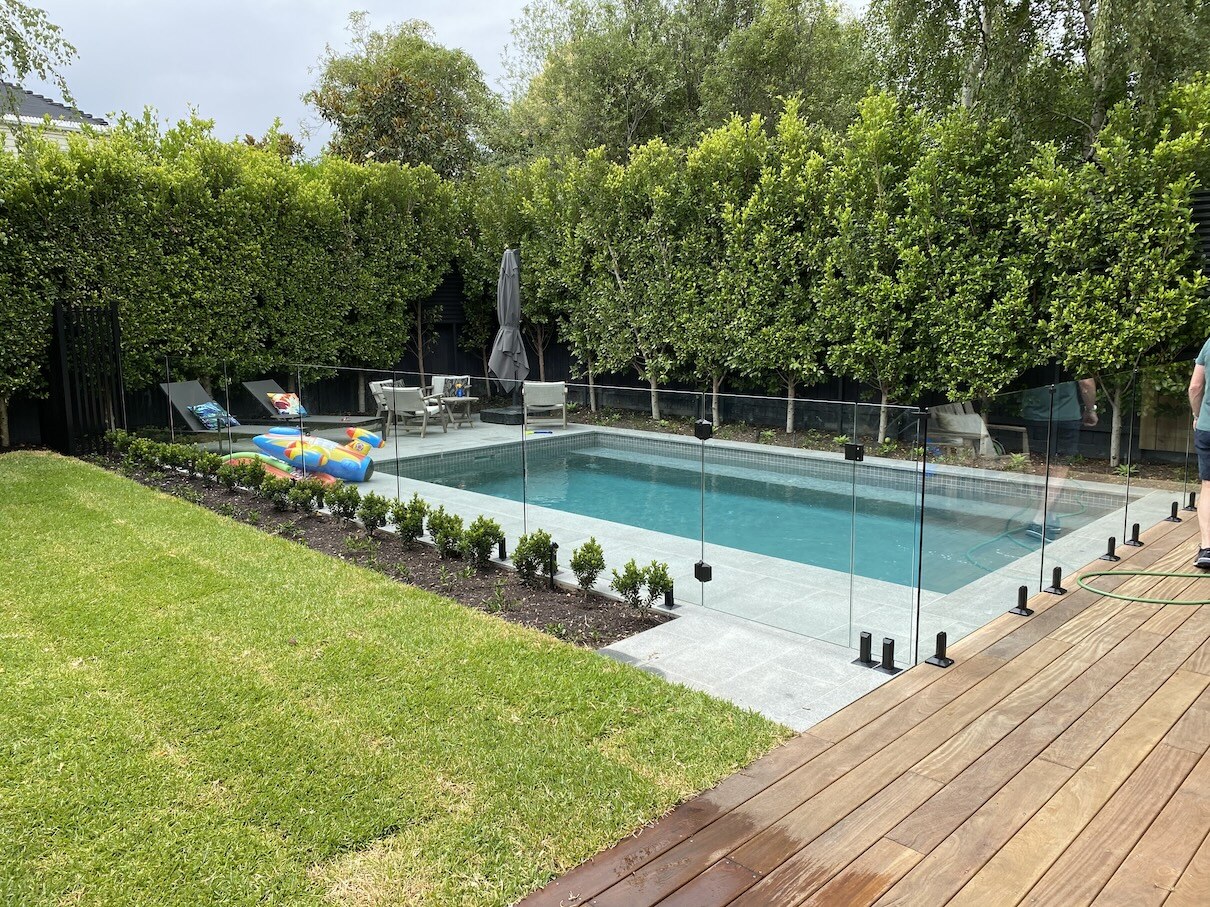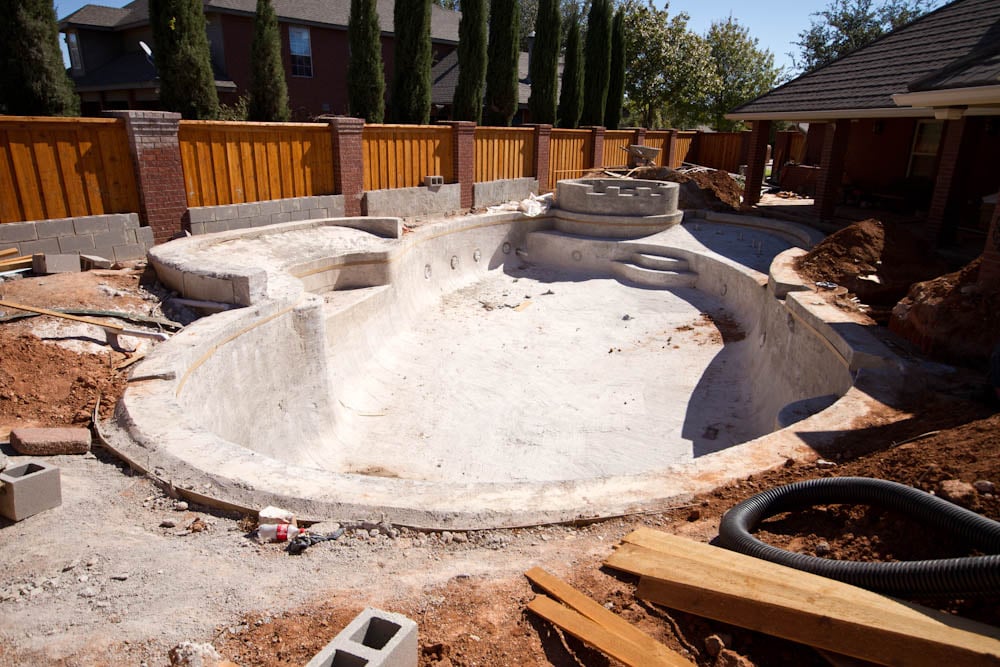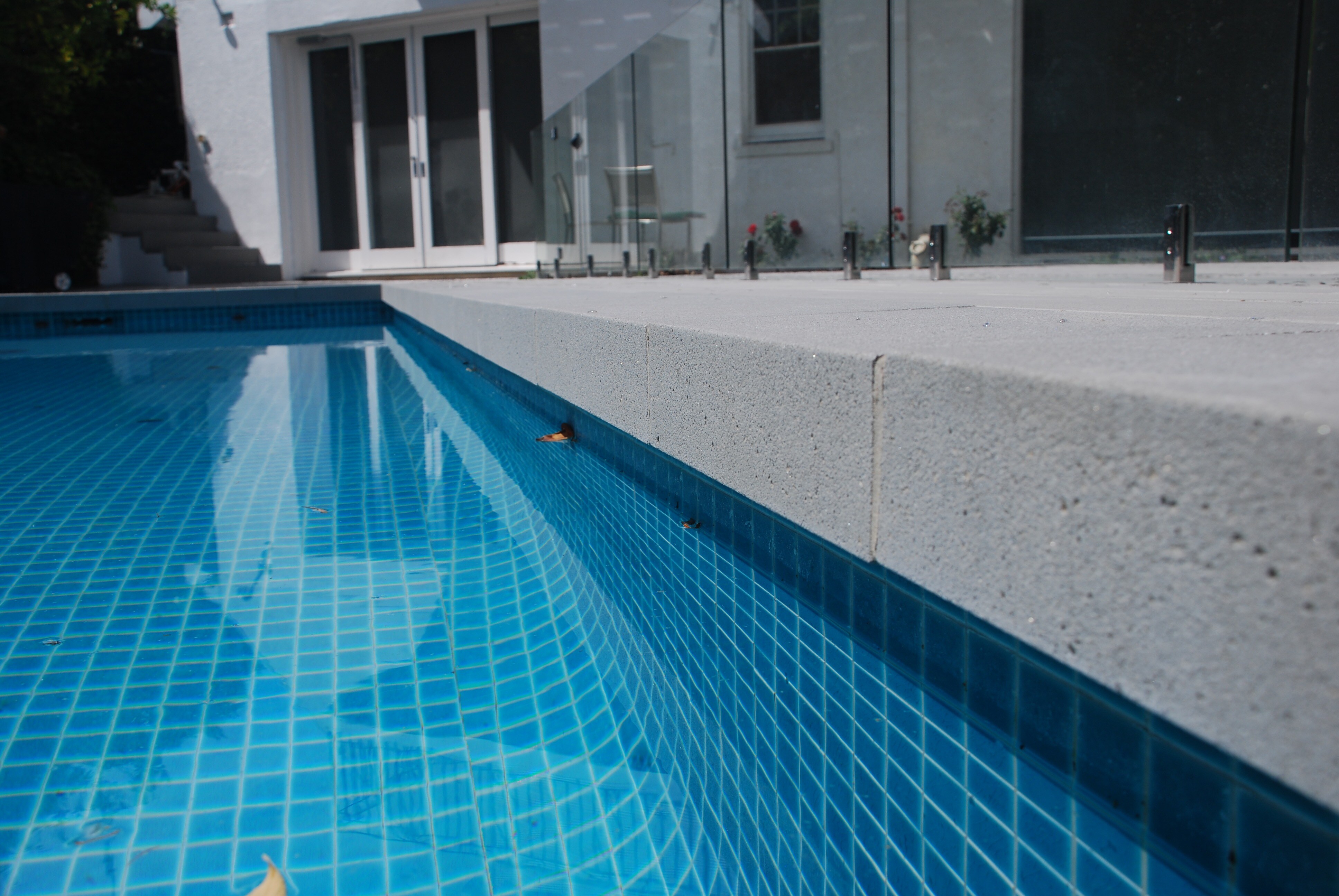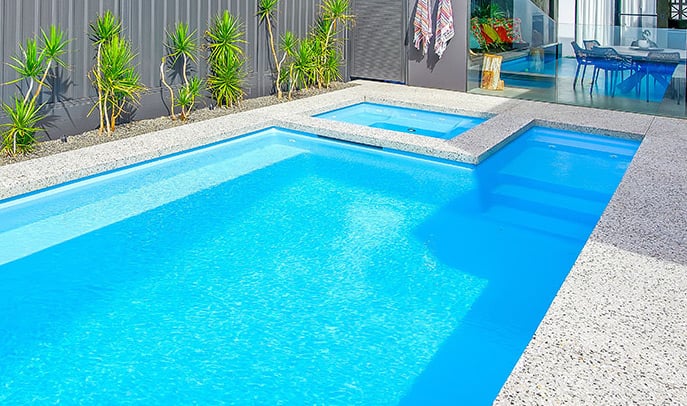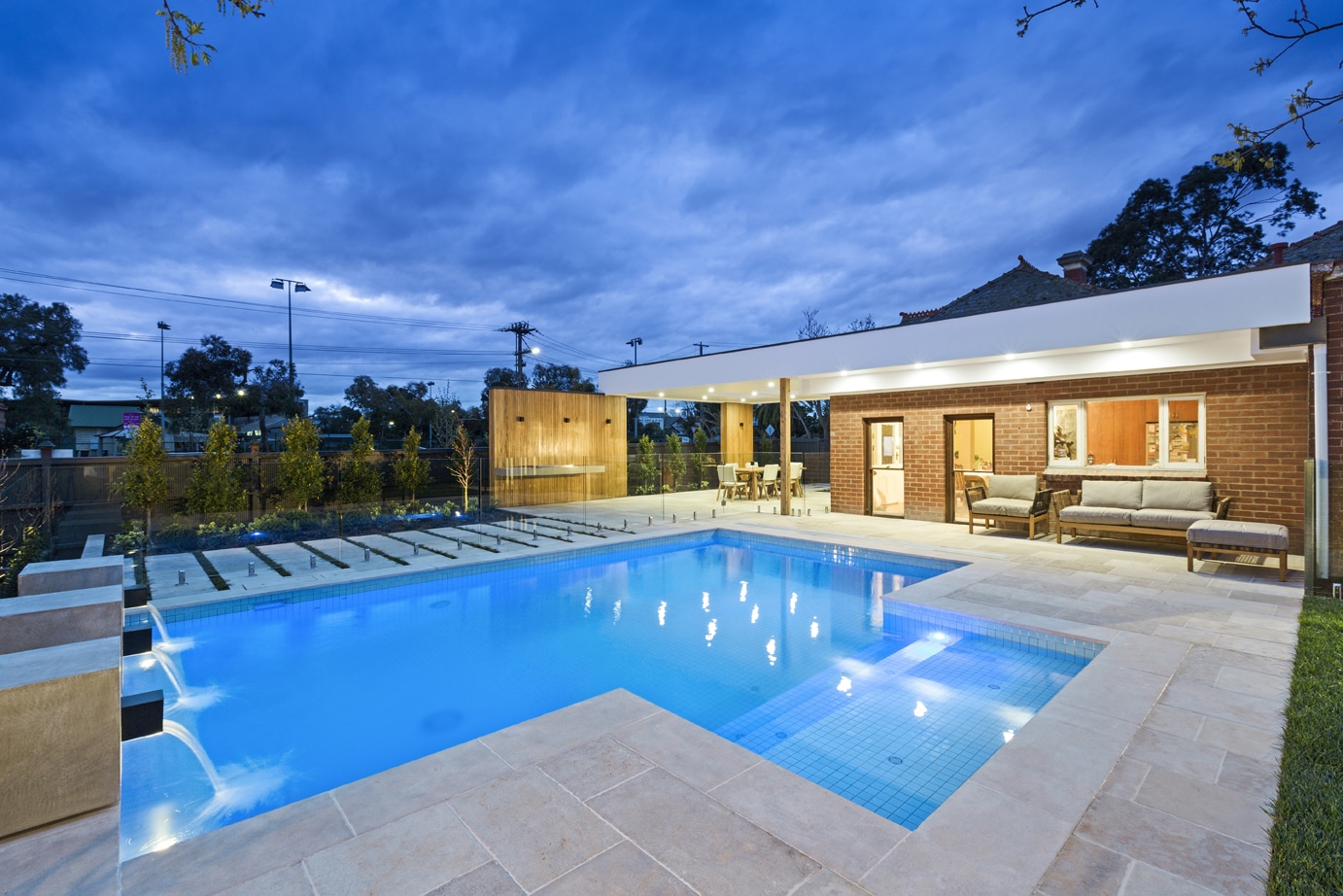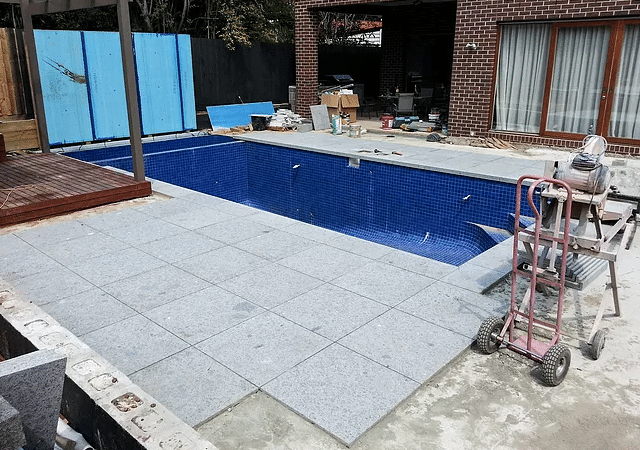All you need to know about installing a pool cover roller
April 12th, 2024
8 min read
By Andrew Whyte
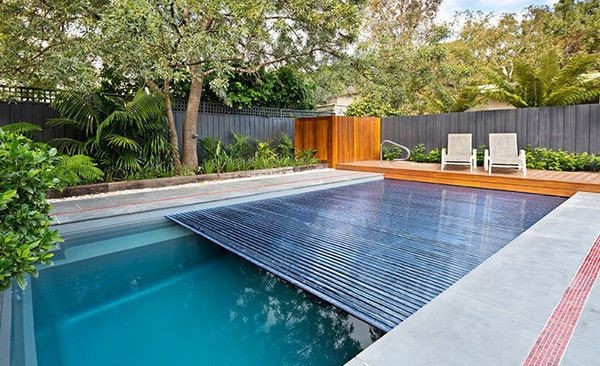
Are you installing a pool and wondering which type of pool cover would be best? Are you also wondering type of pool cover roller to install? Like to get a quick grasp of the challenges involved in installing the different types of pool cover rollers?
Over the past 30+ years, as landscapers, we've been involved in installing every type of pool you can imagine and every type of pool cover and roller. We've learnt a lot about the benefits and disadvantages of each. We'd love to share that knowledge with you now.
We hope that by the time you get to the end of this article that you'll be very clear in your mind not only which is the right type of pool cover roller for your situation but what challenges you might face in installing it.
What are the 3 main types of pool covers/rollers?
Essentially there are 3 main types of pool covers:
- Solar Pool Covers
- Foam Insulation Covers
- Leaf Covers
While it is possible to buy a pool cover for your pool and manually roll it out and back up again each time you need to use the pool, the overwhelming majority of people install a pool cover roller at the end of their pool.
This makes rolling the pool cover out and back in again much easier and faster. It also helps to keep the pool cover in good condition.
The 3 main types of pool cover rollers are:
- Above-ground Pool Cover Roller
- Inground Pool Cover Roller
- Integrated Pool Cover Roller
Generally you can have any type of pool covers installed with any of the above pool rollers. And you can also change pool covers without having to change the pool cover roller.
Above-ground Pool Cover Roller
Generally the simplest and most inexpensive pool cover roller is the traditional Above-ground Pool Roller. Often this will come included with your swimming pool package.
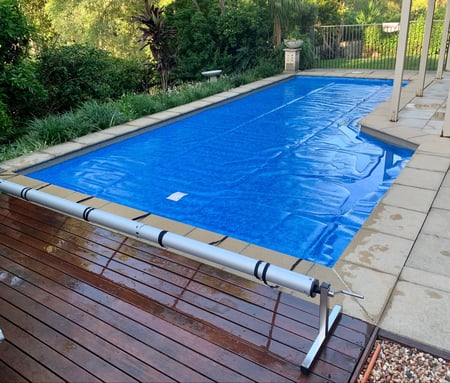
This type of pool cover roller has many advantages including simplicity of installation, low-cost and easy operation. If it malfunctions it is easy to repair or cheap and simple to replace as it has a very basic design.
The disadvantages of this type of pool cover roller is that is cumbersome, unattractive and prevents one end of the pool being used. Because it sits above ground it can also be a trip hazard and can cause accidents or injuries if children around running around the pool perimeter.
Inground Pool Cover Roller
The next most common pool cover roller is the Inground type. Essentially it works in the same way as the above-ground type but it's hidden away below the deck or paved area around the pool.
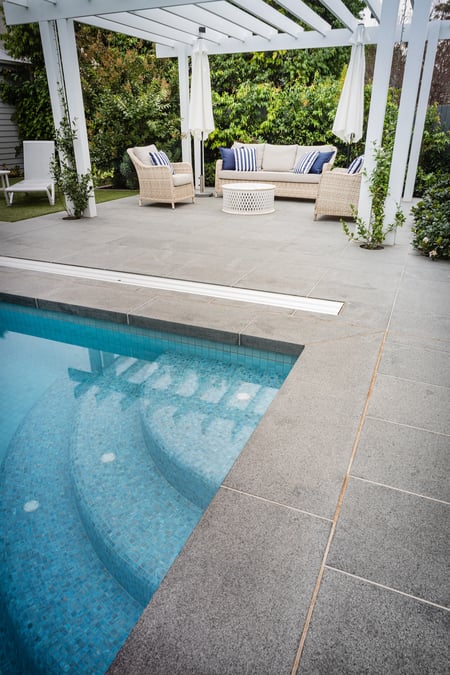
There are several advantages to the inground roller. It is visually more attractive, stores the pool cover away neatly and keeps the pool cover away from the elements so it lasts longer. But the main advantage is that the space it takes up at the end of the pool is completely useable when the cover is rolled away. Since the 'real estate' around a pool is often very valuable, this option can be highly desirable. In the photo above you can see that the pergola area connects with the pool with only the strip of aluminium covering the inground roller showing. Using an above ground pool cover roller in this project simply wouldn't have worked.
The disadvantages of the inground pool cover roller is that they don't tend to come with the pool. They are more expensive than the above-ground versions and are a bit more complicated to repair or maintain. They are a bit more expensive to replace than the above-ground version if they fail completely especially if they are motorised.
Integrated Pool Cover Roller (Remco)
Finally there is the most sophisticated and expensive type of pool cover roller and that is the specially integrated type of pool cover roller like those made by Remco.
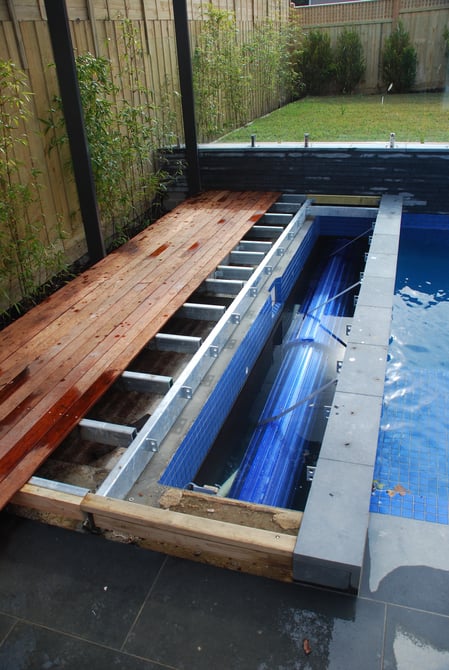
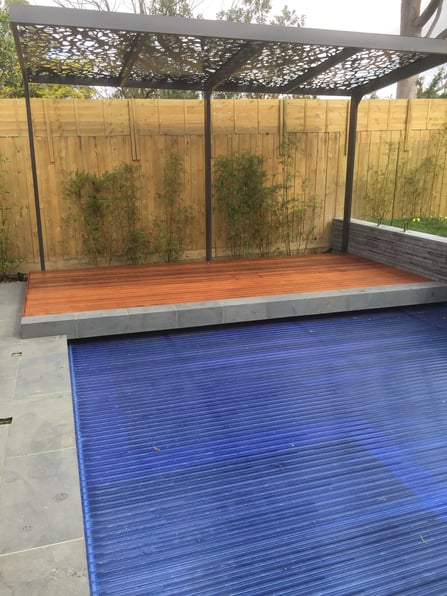
This type of pool cover is much more sophisticated than the other two types as the pool cover is integrated into the design of the pool. A special cavity is built for the pool cover to sit in so that it sits slightly submerged in the water, not just floating on top of it.
While this makes this type of pool cover the most expensive to buy and install it provides many benefits. As the pool cover is made of solid material it provides the ultimate in pool safety as even an adult can walk over it without falling into the water. It can also provide the highest level of protection against pets or other animals falling into the pool.
So who installs the pool cover roller?
Essentially this depends on which type of pool cover roller you are installing.
The above-ground type can be purchased and installed at any time after your pool has gone in. You do NOT need to install it at the same time as your pool. It is fairly simple to set up. You can either leave it unfixed or bolt it in place. (If you are going to fix it in place, get some professional advice about fixing methods.) Many people are happy to leave it unfixed.
An inground pool cover roller however must be installed at the same time as your pool is installed. This can be done either by the pool company or by your landscaper. But you need to clarify when signing your pool contract whether or not the pool company intends to install it and whether there is an additional fee for this. Some pool companies will include the roller in the price of purchasing the pool but simply drop it off at the site, leaving you with the problem of getting it installed.
Your landscaper will be more than happy to install it, BUT it's important that you advise your landscaper right from the start that you will be getting an inground pool cover roller so they can allow for it in both estimating and planning works. (This is another reason why it's important to have your landscaper manage all the works regarding installing a pool and NOT your pool company. To see more about this issue please read this article - How to avoid costly mistakes when installing a pool)
We have had the situation before where we arrived at a client's site one day after the pool had been installed to find an inground pool cover roller system sitting in their garage. When we enquired, the client said the pool company had just dropped it off as it was included with their pool. Yet, even though we had been working on this project for months, from garden design through to construction, neither the client nor the pool company had thought it important to mention to us that an inground roller was included in what they client had signed up for. We had made no allowance for it in the design or our costs to install the deck around the pool. To make matters worse, the pool company had installed their pool pipes exactly where the pool cover now needed to go. As a result the pool company had to disconnect the pipes and then install the pool cover for free due to the fact the client was extremely upset that at no point had the pool company mentioned installation costs for the roller.
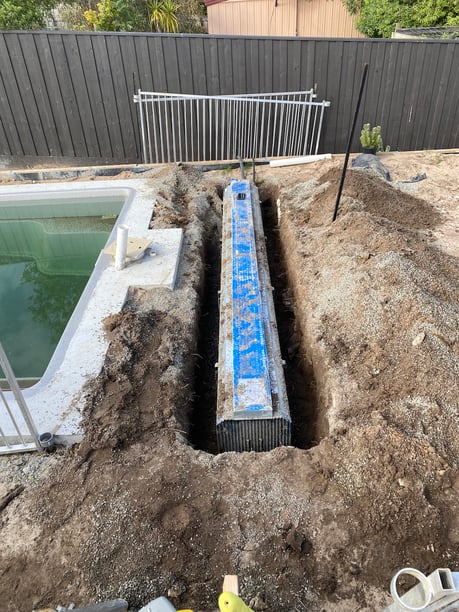
The pros and cons of swimming pool covers
There are many reasons why people choose a cover for their pool. These include:
- stopping evaporation
- keeping heat in the pool
- preventing kids and pets from falling into the pool
- keeping out leaves and dirt
- reducing the amount of chemicals required to keep the water clean.
Let's face it, having a pool in Melbourne can be a bit challenging when it comes to keeping it warm enough to swim in for the longest period possible each year. Having a cover helps with this and makes a lot of sense. As does saving the pool water from evaporating too much.
While many people say that a pool cover keeps leaf litter out of the pool, others say that keeping a pool cover clean can be harder and more complex than keeping the pool clean. Some people who have those crawling type pool cleaners that suck up leaves and dirt from the bottom of the pool prefer to just let all the dirt and leaves fall to the bottom of the pool where they can be easily removed.
Whether or not this will be an issue for you is best decided by looking around and seeing how many trees might drop leaves into your pool and what will be involved in keeping your pool clean.
It's important to note that an in-ground pool cover roller should most definitely be installed when the pool is installed. While they can be 'retro-fitted' this is an expensive exercise that requires pavers to ripped up and replaced which can often result in an obvious mismatch with the surrounding area, especially if the pool was installed several years ago. So the decision to install an inground pool roller cover is best made when you first decide to install the pool.
With above ground pool cover rollers, many people keep them unfixed because they only bring them out and roll out the pool cover when the swimming season is over. This is to keep the pool covered throughout the winter. When summer comes again, they roll up the pool cover and put it and the roller away until next winter.
Considering that an inground pool cover roller can be many times the cost of an above-ground one, you might want to think about how you are likely to use your pool cover before deciding which one you want.
Can you customise your pool cover roller?
The best time to discuss your pool cover roller options is when briefing your designer to create your garden. This way your designer can incorporate your choice into your garden and pool design and give you the best possible solution for your needs.
If you already have a pool and are wanting to install a pool cover roller as part of an overall rejuvenation of your garden and pool surrounds, you should talk to your designer as they might be able to come up with clever solutions.
One such solution we created for our client was a real challenge as they had very little space available around their pool and wanted a deck as well. A standard above ground pool cover roller would have restricted the space even more. So we came up with a clever solution where integrated the roller under the deck where it would be out of the way. A simple slit in the side of deck provided a way for the pool cover to be rolled out when needed.
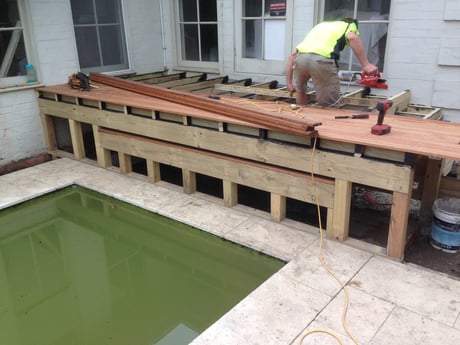
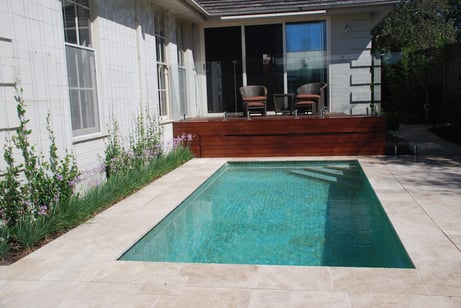
Possible challenges with inground covers
A really important reason why you should discuss your pool cover roller options with your designer right from the start is that other things may get in the way of an inground cover. It's also important to discuss this with your pool company.
One thing that commonly causes a problem is the location of the pool skimmer box. You don't want to discover at the point of installing the pool that the inground pool cover roller is meant to go exactly where the skimmer box has been installed!
Additionally, you want to ensure your landscape designer and pool company discuss where the pool pipes will go for the same reason. Every pool has a number of pipes that run between the pool and the pumps & filters so you need to also ensure the pool pipes aren't where you want the inground pool cover roller to go.
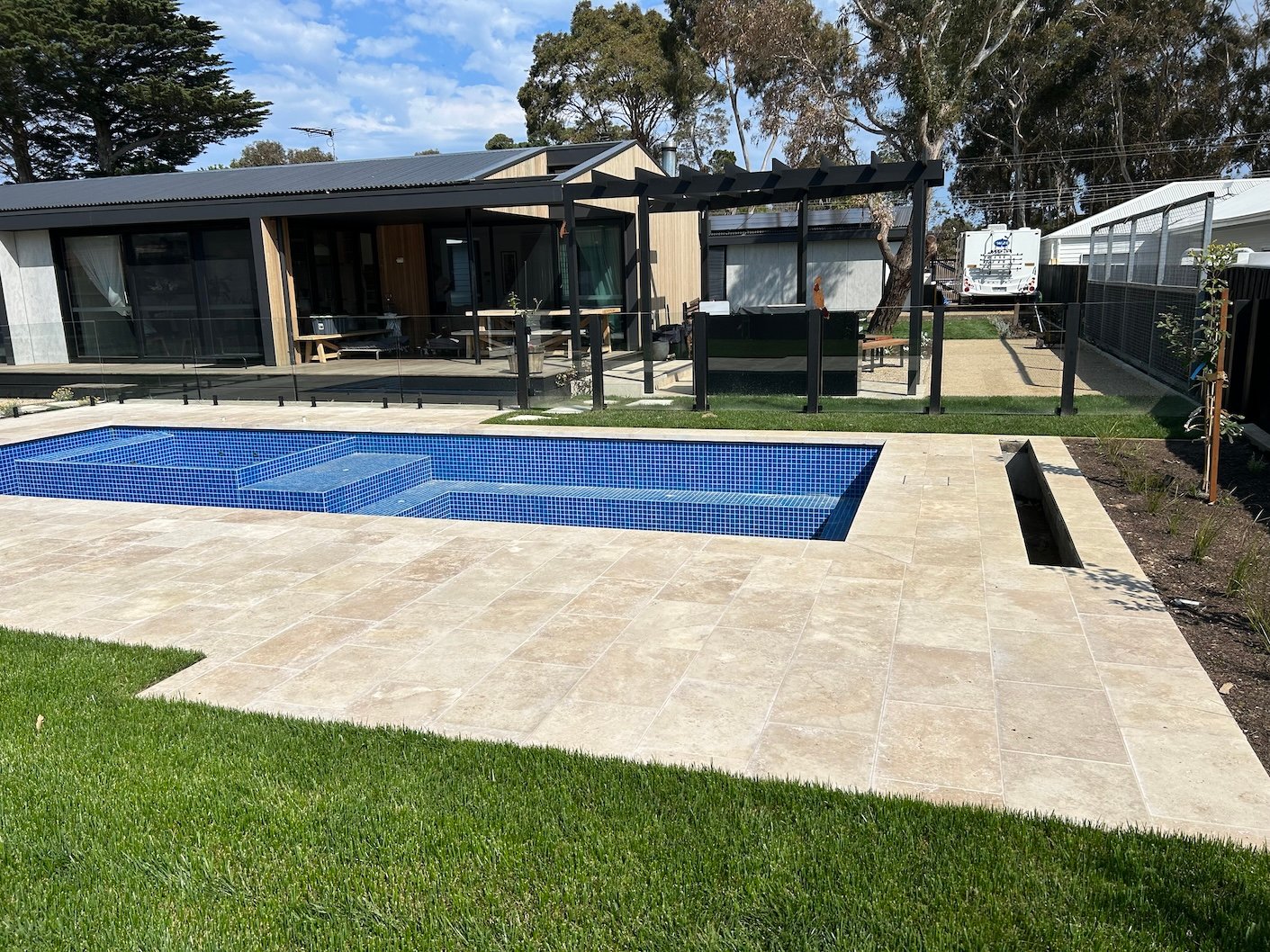
How decking can affect your inground pool cover roller
When you plan to have a deck next to your pool, where your inground pool cover roller will also be location, things can get complicated. Your landscaper may be required to engage an engineer to specify how all of this work will come together.
You will also require a building surveyor to inspect and approve it.
When you think about all the things that can surround an inground pool - pool pipes, skimmer box and electrical cables - adding an inground pool cover roller can add additional complexity. (If you've never seen how complex this can all be, take a look at the photos below to see for yourself.)
With all this going on, you want to make sure it is all sorted and planned for in the initial design phase so as to make sure it all complies with the relevant building codes.
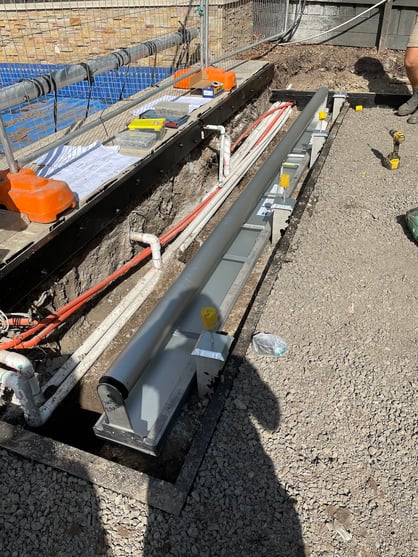
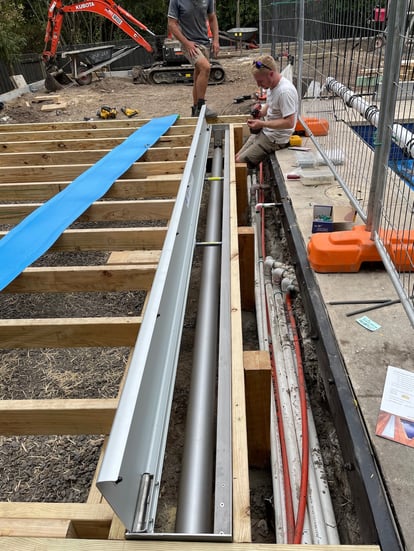
How else does a pool cover help you?
As mentioned above, having a cover on your swimming pool can help dramatically reduce the amount of pool chemicals you need to use to keep your pool water sparkling clean. Without delving into complexity, the pool cover reduces the amount of UV light the chlorine in your pool is exposed to and this slows down the rate at which it degrades making it last longer.
If you are in an area that is prone to being visited by ducks or other water birds to ducks, a pool cover acts as a deterrent to them, meaning you don't have to take extra steps to clean up their waste!
Additionally all sorts of insects, bees and bugs etc can fly or crawl into a pool. But a pool cover will tend to keep them out and give them a chance to crawl out and not drown. The same goes for mice or other small creatures.
In summary a pool cover can be a real asset to a pool, making it safer, more enjoyable and easier to maintain. It's good to know your options in regards to which type of swimming pool cover roller you might choose.
We hope you've found this article informative and that it will help you choose the right one for you. If you have any more questions or queries please don't hesitate to contact us by phone or email.
In the meantime if you'd like a Free Pool Design Guide to help inspire you and give you many tips and tricks on how to get the best outcome for your pool project, click this link below:
Articles covering Landscape Design and Construction in Melbourne...
Which trees can you plant near pools & spas in Victoria?
Pool Coping: What is the right style for your project?
Integrating Your Pool into Your Landscape: A Comprehensive Guide
Founder of Whyte Gardens
Topics:

